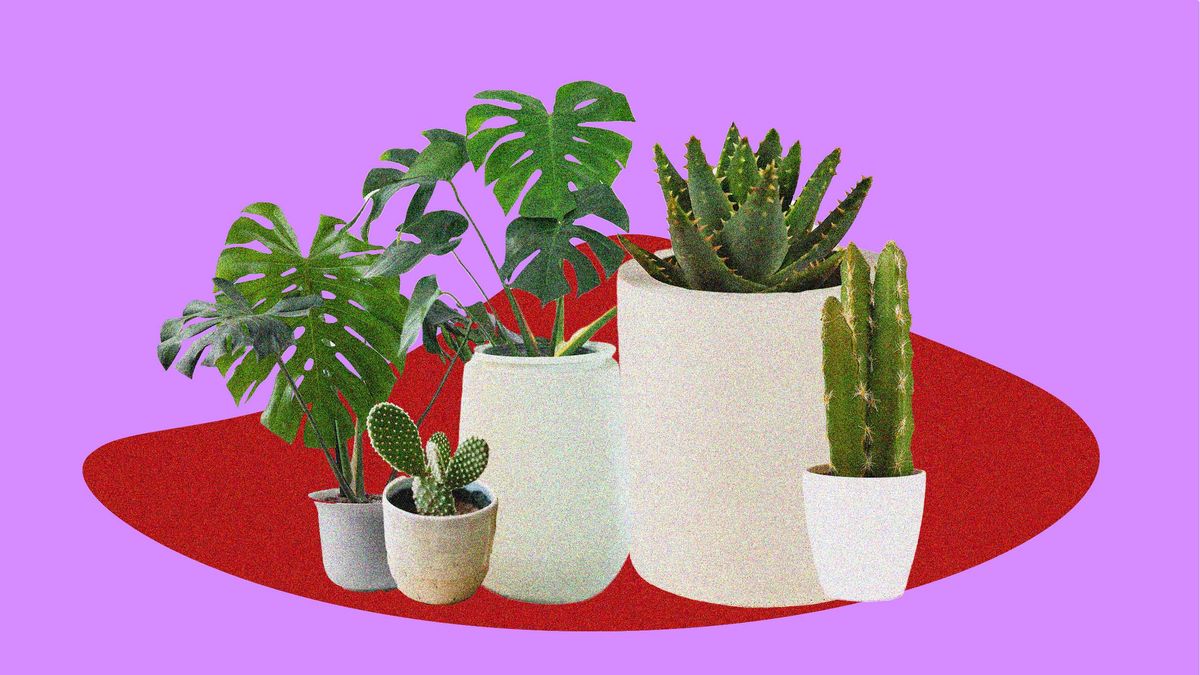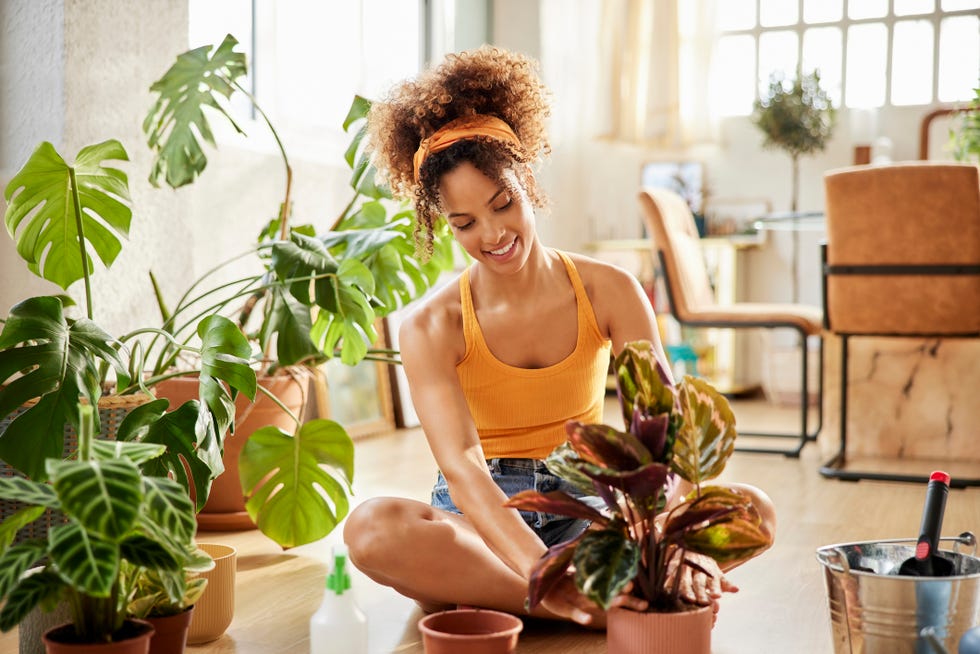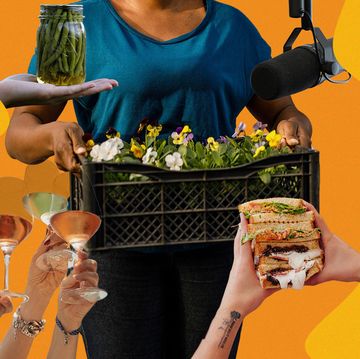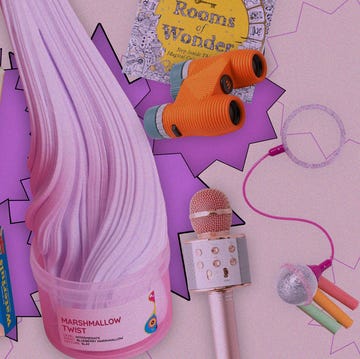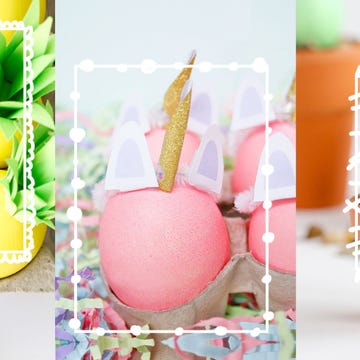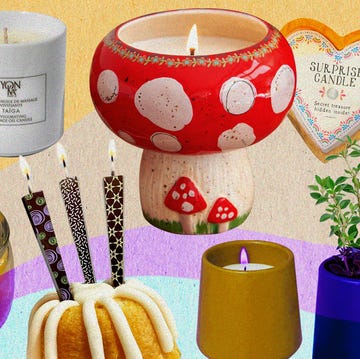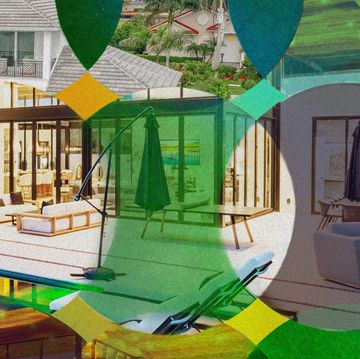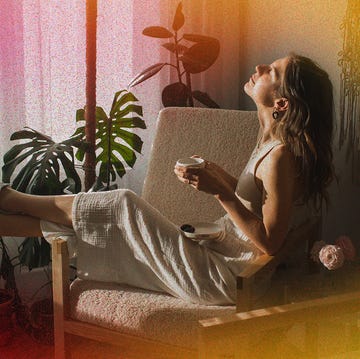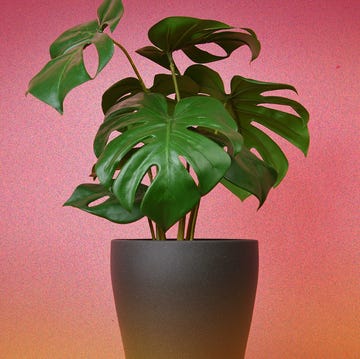In the Shondaland series Reclaiming Home, you’ll learn that home is more than the place to lay your head at night. It’s a space where families gather, memories form, and a sense of calm begins. From joy-sparking plants to aromas that illicit comfy feelings, the ways in which you can maximize and take ownership of your home are varied. So settle in, and let's look at all the ways we make places and spaces our homes.
From bread baking to riding a Peloton, of all the pastimes and pursuits that people swore they’d take up in those early days of the pandemic, few seemed to go as mainstream (and stick) like plant ownership. Demand for plants was already accelerating around 2019, according to a study by the National Gardening Association, but “plant parenthood” skyrocketed in 2020, with more than 70 percent of greenhouses seeing sales increase. Indeed, sales jumped about 20 percent that year, and while industry analysts say that kind of growth has subsided, people are still very much welcoming plants into their apartments, homes, and work spaces. Whatever the new normal is, one thing’s for certain: It’s definitely green. What’s more, much of the demand has been fueled by 18-to-34-year-olds.
“We’re not necessarily buying houses with gardens like our parents’ generation,” says Erin Marino, the editorial lead at the Sill, the New York City-based plant retailer that has nine stores nationwide and a bustling digital presence blooming with tips for newbies. “Plants give us the ability to grow something and have something going on other than our phones.” She says she first saw a boom in interest when she joined the Sill in 2012, just as Pinterest, Tumblr, and Instagram were becoming popular and giving everyone the ability to peer into others’ living spaces. “People were sharing beautiful photos worthy of Architectural Digest or Elle Decor. … People were seeing these gorgeous, aspirational spaces and thinking, ‘I can’t afford that couch, but I can get some of those plants.’”
In a world in desperate need of more green (not to mention more love and TLC), having more plants around is a very good thing. Studies show plants can help purify the air in a space, reduce stress, boost productivity and creativity, and much more. Plus, they just look nice and silently signal to guests that you maybe, kinda, sorta have the whole adulting thing down pat. That said, plant parenting can be daunting, particularly if you live in a space with not-ideal lighting or your thumb is less than verdant. If you’re new to #plantlife and want to get started, here are some tips from experts to make your journey rewarding.
Focus on your own lawn
You may be familiar with that old saying, “Focus on your own lawn; the grass is greener where you water it.” That’s meant to be a general rule for life — the notion that minding your own affairs will prevent you from being caught in a potentially disastrous cycle of comparing yourself to others. When it comes to plant care, Durrell Eastland, better known as the Black Plantman to his 53K Instagram followers, puts it another way: “Get off Instagram.” That’s probably surprising advice coming from someone who, well, has more than 50,000 people following his plant advice on Instagram, but it makes sense. “People see others’ plants on Instagram and think, ‘How’d they get that plant so big, so bright, so beautiful? I want it now.’ You want to take this perfect image out of your brain,” he says. Becoming a plant pro takes time, practice, and lots of trial and error. As with anything new, you’re probably not going to be great at it right away.
Start simple and local
Because plants are living things, and managing living things can be tricky, Eastland advises that newbies hit up a local nursery. This way, you’re getting plants that thrive in the area where you live. “If you’re ordering some plant you saw on Instagram from Indonesia, and you live in Michigan, it’s not going to work,” he said. That said, there are certain plants that are practically idiotproof and perfect for beginners. Marino at the Sill recommends the tried-and-true starter plants: the Pothos (“It’s really hardy”), as well as the Snake Plant and the ZZ Plant (“You hear those as suggestions from everyone; they’re drought tolerant and low-light tolerant”). All are virtually indestructible and even benefit from being left alone.
Don’t overdo it
Indeed, leaving plants alone is its own important rule, and one new plant parents often get wrong. Larry Hodgson, the author of Houseplants for Dummies, says what plant pros have been saying since cavemen dragged the first shrubs into their cribs: “Don’t overwater.” Overwatering is the primary reason people kill plants (seriously!). “Water flows through the roots, and if the roots are always wet, that’s when root rot sets in,” he says. Hodgson also cautions against touching plants. Studies have shown that even the lightest touch from a person can trigger a genetic response from the plant; when an insect lands on a plant, it basically prepares itself for being eaten, which uses up a lot of energy. “If you’re starting out,” Hodgson says, “remember that light is key.” Figure out how to give your new dirt baby the optimal light it needs, and then leave it alone.
Know you’ll fail
Eastland has more than 100 plants in his Delaware home and stresses that plant parenting is full of ups and downs; even he has had to bury some of his beloved babies. Accepting that you’re going to mess up and probably kill a plant, even if you’ve done everything right, is key. “These are living things,” he says. “At the end of the day, they’re going to do what they’re gonna do.”
Enjoy the process
There’s a reason why both Hodgson, who has 150 plants in his home (down from 300 to 400 in his heyday), and Eastland have so many plants in their spaces: They’re rewarding. Says Hodgson, who’s been a plant pro since the 1970s, “One of the things people realized while being locked up in home [during the most intense days of the pandemic] was that it’s comforting to have something alive. Having plants gave people a chance to have a little environment at home.” Indeed, plants might be the simplest, easiest way to make any space feel like home; they’re pretty, they’re soothing, and they help us feel more connected to nature. Eastland adds, “Plants improve the quality of overall comfort in your home. They provide a sense of serenity.”
Malcolm Venable is a staff writer at Shondaland. Follow him on Twitter @malcolmvenable.
Get Shondaland directly in your inbox: SUBSCRIBE TODAY
